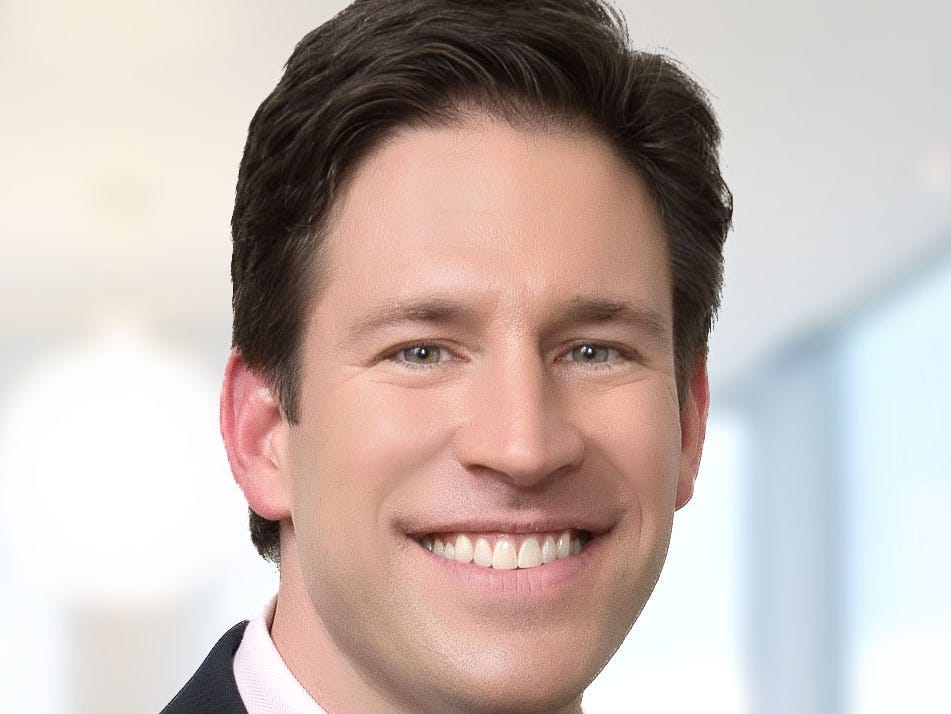- Troy Gayeski, former co-CIO at hedge fund SkyBridge, joined $25 billion FS Investments in October.
- He sees markets transitioning from “green” to “yellow” now and could flash red light next year.
- He shares how investors can plan ahead, diversify risk, and boost income with alternative assets.
After an “Uptober” where the S&P 500 gained 6.9% to close at a record high, stocks are roaring into what’s historically been “the best month of the year.”
However, investors should expect anything but smooth sailing going forward.
With the Federal Reserve likely to announce tapering at the FOMC meeting this week and rate hikes potentially in store next year, investors could be walking into “multiple 10% corrections” in 2022, according to Troy Gayeski, who joined the $25 billion asset manager FS Investments as chief market strategist in October.
To be sure, he does anticipate a strong finish for the year given the ample liquidity in the system, strong nominal GDP, and better-than-expected corporate earnings so far. Such a turnaround won’t be an anomaly. In 13 of the 21 years – or 62% of the time -since 1980 when the S&P 500 experienced a double-digit drawdown, it ended with positive returns, according to Morningstar data.
“We are not arrogant enough to say that the bull market is over and we don’t believe it is,” Gayeski told Insider in an interview. “We think there is seasonal strength at the end of the year.”
The former co-CIO of hedge fund SkyBridge Capital said he has been a "green light, go" guy since the bottom of the Covid-19 pandemic, given the economic strength and monetary supply in the system. But now he is seeing the markets transitioning from "green" to "yellow."
"We've seen money supply growth go from insane numbers of 100% annualized to a long stretch of 15% to 20% to now roughly 9% annualized growth rates," he explained. "Once the taper starts to bite, you'll see that drop further. And once the Fed actually starts to hike, then it will be a bright red light."
How to plan ahead for the 'bright red light'
While investors need not fret over the "red light" warning until the money supply actually starts to tighten relative to nominal GDP, Gayeski warns that the markets do not always wait to reprice for the actual Fed event.
"If you think back to 2015, the dollar strengthened dramatically. We had a whole host of problems whether it was in commodities like oil or the China devaluation scare," he recalled. "And that was all a run-up to this first Fed rate hike since prior to the global financial crisis."
In his view, that's why investors should plan ahead because no one is going to ring the alarm bell and help them de-risk at the exact right time.
"Once we get into next year, taper will be formed in full effect. The Fed will more than likely hike or at least they should hike," he said. "If you wait till then to make these decisions, you are arguably going to be too late and you are walking into multiple 10% corrections."
Gayeski thinks that one of the ways investors can peel off risk from equities and other aggressive asset classes but still get reasonable yields or income streams is by shifting into alternative assets, which span private equity, private credit, and real estate, etc.
To be sure, FS Investments focuses primarily on alternative assets, but the firm packages them in liquid or semi-liquid structures that allow investors to access them without having to lock up their capital for multiple years or meeting hefty minimum investment requirements, Gayeski said.
2 sources of alternative income
While it has not seen much fanfare, one of the sub-asset classes in alternative assets - business development companies - has grown to $120 billion today from less than $5 billion in 2009, according to Gayeski.
BDCs, which combine the characteristics of publicly traded companies and closed-end funds, give investors exposure to the debt or equity of small- and medium-cap companies in the US. Because they are usually registered as Regulated Investment Companies, BDCs must distribute 90% of their income to investors in order to be exempt from federal taxes. Compared to stocks, BDC could potentially generate higher dividends yields, but they still come with illiquidity and diversification risks, among others.
"Over the last five to seven years, particularly for BDCs, more firms and capital market participants recognize that this is actually a great structure," he said. "That's why you see the growth pick up dramatically recently and we'd expect that to continue."
Another less-known source of alternative income is real estate investment trusts tracking the mortgages of commercial real estate properties. While debt REITs, which lend money to real estate buyers, do not have the same upside as equity REITs that buy and own real estate properties, they have "way less downside side when things go South."
Investors also have the opportunity to potentially generate more alpha through the underwriting and selection process due to the complexity of the commercial real estate market, which was pummeled during the pandemic.
"As a debt investor, you are trying to solve for how do you create a reasonable income stream that has as little duration as possible and as little risk of loss as possible," he said. "Given the size and complexity of the asset class, you are left with a greater opportunity to earn excess yield with less risk loss than at least the vanilla markets we focus on."

